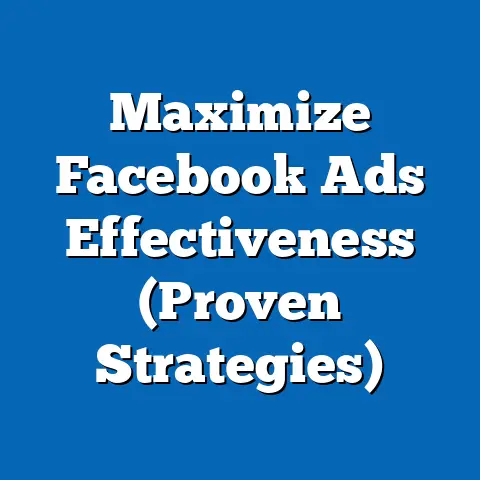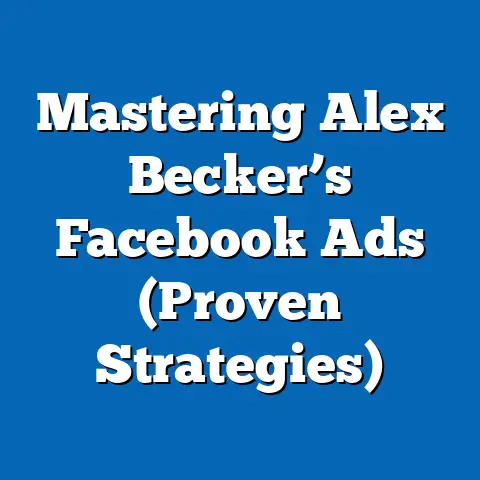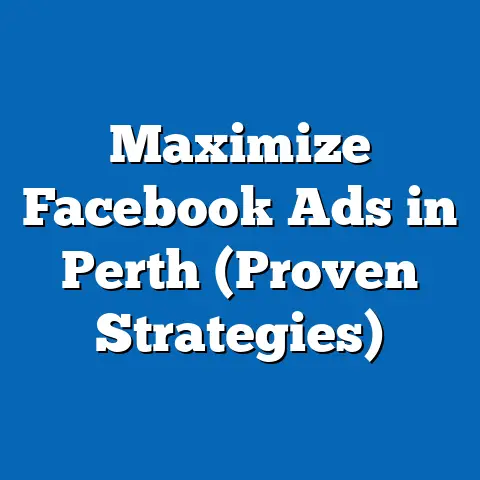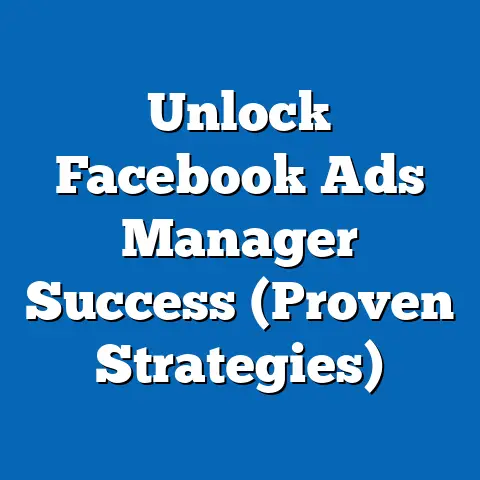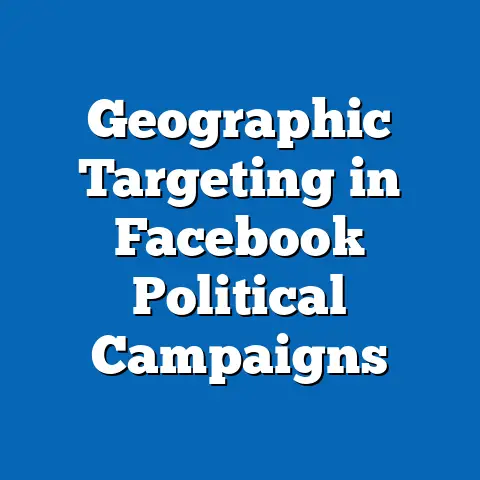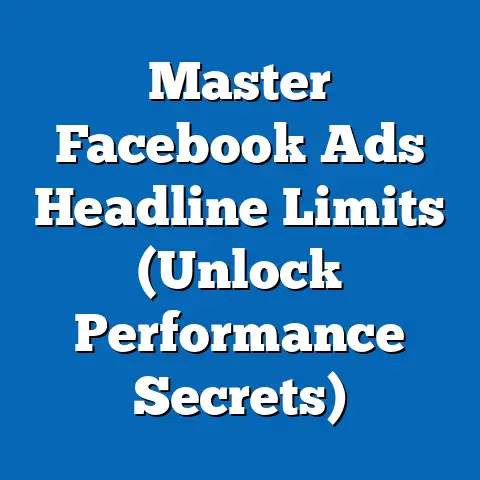Unlocking Gym Lead Costs (Maximize fb ad ROI)
In today’s digital age, the marketing landscape is incredibly noisy. It’s filled with a constant barrage of advertisements, messages, and content, making it increasingly challenging for businesses, especially gyms, to stand out. Think about it – your potential customers are scrolling through their feeds, bombarded with information. To truly make an impact and generate valuable leads, you need to cut through the noise and ensure your Facebook ads resonate with the right audience. This means not just running ads, but strategically optimizing them to maximize your return on investment (ROI). In this guide, I’ll share insights and actionable strategies to help you unlock your gym’s lead costs and ensure every dollar spent on Facebook advertising is working hard for you. From understanding the basics of Facebook ads to advanced targeting techniques, I’ll cover everything you need to know to achieve advertising success.
Understanding Facebook Ads for Gyms
Facebook ads have revolutionized the way businesses connect with potential customers, and gyms are no exception. The platform’s strength lies in its advanced targeting capabilities, allowing you to reach specific demographics, interests, and behaviors. As a gym owner, I’ve seen firsthand how this precision can transform a marketing campaign from a shot in the dark to a laser-focused effort.
Facebook boasts a massive and diverse user base, making it a goldmine for gyms looking to attract new members. Think about the possibilities: you can target individuals interested in fitness, healthy eating, or specific workout routines. You can even target people who have recently moved to your area or are planning a lifestyle change, like getting in shape for a wedding.
Creating compelling ad content is just as crucial as targeting. Your ads need to grab attention and communicate the unique value your gym offers. Showcase your state-of-the-art equipment, highlight your expert trainers, and emphasize the supportive community you’ve built. Remember, people are looking for more than just a place to work out; they’re seeking a lifestyle change and a sense of belonging.
Here’s a statistic to keep in mind: according to recent reports, fitness-related businesses that use Facebook ads see an average conversion rate of 9.74%. This underscores the potential of Facebook ads for driving leads and memberships. However, simply running ads isn’t enough. You need to understand your audience, craft compelling content, and continuously optimize your campaigns to achieve the best results.
Key Takeaway: Facebook ads offer unparalleled targeting capabilities for gyms, but success depends on understanding your audience and creating compelling content that resonates with their needs and desires.
Identifying and Calculating Lead Costs
Before diving into strategies to reduce lead costs, it’s essential to understand what they are and how to calculate them. Lead costs refer to the amount of money you spend to acquire a single lead through your Facebook ad campaigns. These costs can vary significantly based on several factors, including your targeting strategy, ad placement, and overall campaign objectives.
For example, if you’re targeting a broad audience with generic messaging, your lead costs will likely be higher than if you’re targeting a niche audience with highly personalized ads. Ad placement also plays a role; ads placed in the News Feed might perform differently than those in Stories or the Marketplace.
To calculate your lead costs, you need to track metrics such as Cost Per Lead (CPL) and Customer Acquisition Cost (CAC). CPL represents the cost of acquiring a lead who has shown interest in your gym, while CAC represents the total cost of converting that lead into a paying member.
Here’s a practical example: let’s say you spend $500 on a Facebook ad campaign and generate 50 leads. Your CPL would be $10 ($500 / 50). However, if only 10 of those leads convert into paying members, your CAC would be $50 ($500 / 10).
Understanding these metrics is crucial because it allows you to assess the financial impact of your advertising campaigns. If your CPL or CAC is too high, it might indicate that your targeting is off, your ad content isn’t compelling, or your sales process needs improvement.
As a gym owner, I’ve found that regularly monitoring these metrics helps me identify areas for optimization and make informed decisions about my advertising budget. For instance, I once noticed that my CPL was significantly higher for ads targeting a younger demographic. After analyzing the data, I realized that my messaging wasn’t resonating with this audience. I adjusted my ad copy to focus on the benefits of fitness for stress relief and mental well-being, and my CPL dropped dramatically.
Key Takeaway: Understanding and calculating lead costs is essential for assessing the financial impact of your Facebook ad campaigns and identifying areas for optimization.
Strategies for Reducing Lead Costs
Now that we’ve covered the basics of Facebook ads and how to calculate lead costs, let’s dive into actionable strategies you can implement to reduce these costs and maximize your ROI. I’ve personally tested and refined these strategies over the years, and I’m confident they can help you achieve significant improvements in your advertising performance.
Targeting and Segmentation
One of the most effective ways to reduce lead costs is to refine your audience targeting. Facebook’s targeting capabilities are incredibly powerful, allowing you to reach specific demographics, interests, and behaviors. Instead of targeting a broad audience, focus on identifying your ideal gym members and tailoring your ads to their specific needs and desires.
For example, if you’re running a campaign to promote a new yoga class, you might target individuals interested in yoga, meditation, or mindfulness. You could also target people who have recently purchased yoga mats or attended yoga retreats.
Segmentation is another crucial aspect of targeting. Divide your audience into smaller, more specific segments based on demographics, interests, or behaviors. This allows you to create highly personalized ads that resonate with each segment.
I once ran a campaign where I segmented my audience based on their fitness goals. I created one ad for people interested in weight loss, another for people interested in building muscle, and a third for people interested in improving their overall health. The results were astounding. My CPL dropped by 40%, and my conversion rate doubled.
A/B Testing
A/B testing, also known as split testing, involves creating multiple versions of your ads and testing them against each other to see which performs best. This can include testing different ad creatives, headlines, calls-to-action (CTAs), and targeting options.
The goal of A/B testing is to identify the elements that resonate most with your audience and optimize your ads accordingly. For example, you might test two different headlines to see which one generates more clicks. Or you might test two different images to see which one captures more attention.
I’ve found that A/B testing is an ongoing process. You should continuously test different elements of your ads to identify areas for improvement. Even small changes can have a significant impact on your lead costs and overall campaign performance.
Ad Placement Optimization
Facebook offers a variety of ad placements, including the News Feed, Stories, Marketplace, and Audience Network. Each placement has its own unique characteristics and audience, so it’s essential to experiment with different placements to see which performs best for your gym.
For example, ads placed in the News Feed might be more effective for generating leads, while ads placed in Stories might be better for building brand awareness. You can also use Facebook’s Automatic Placements feature, which automatically places your ads in the placements where they’re most likely to perform well.
I’ve found that ad placement optimization can have a significant impact on lead costs. For instance, I once ran a campaign where I initially focused on the News Feed. However, after experimenting with Stories, I discovered that my CPL was significantly lower. I shifted more of my budget to Stories, and my overall campaign performance improved dramatically.
Retargeting Campaigns
Retargeting involves showing ads to people who have previously interacted with your gym, either on your website or on Facebook. This can include people who have visited your website, watched your videos, or engaged with your posts.
Retargeting is a highly effective strategy for increasing conversion rates and reducing lead costs. People who have already shown interest in your gym are more likely to convert into paying members than people who have never heard of you.
I’ve found that retargeting campaigns are particularly effective for promoting special offers or discounts. For example, you might show an ad to people who have visited your website but haven’t yet signed up for a membership, offering them a free trial or a discounted rate.
Value Proposition and Offers
Your value proposition is the unique benefit your gym offers to potential members. This could include your state-of-the-art equipment, your expert trainers, your supportive community, or your convenient location.
Your offers are the incentives you provide to encourage people to sign up for a membership. This could include free trials, discounts, or special promotions.
Creating a compelling value proposition and offering attractive incentives can significantly improve your conversion rates and reduce your lead costs. People are more likely to sign up for a membership if they believe they’re getting a great value for their money.
I’ve found that offering free trials is a particularly effective strategy for attracting leads. It allows people to experience your gym firsthand and see if it’s a good fit for them. If they enjoy their trial, they’re more likely to sign up for a membership.
Key Takeaway: Reducing lead costs requires a multifaceted approach that includes refining your targeting, A/B testing your ads, optimizing your ad placements, retargeting previous visitors, and creating a compelling value proposition with attractive offers.
Measuring Success and Adjusting Strategies
Measuring the success of your Facebook ad campaigns is crucial for understanding what’s working and what’s not. This information can inform future campaign adjustments and help you optimize your advertising performance.
Key performance indicators (KPIs) that gyms should track include:
- Cost Per Lead (CPL): The cost of acquiring a lead.
- Customer Acquisition Cost (CAC): The total cost of converting a lead into a paying member.
- Conversion Rate: The percentage of leads who convert into paying members.
- Engagement Rate: The percentage of people who engage with your ads (e.g., likes, comments, shares).
- Click-Through Rate (CTR): The percentage of people who click on your ads.
- Return on Ad Spend (ROAS): The amount of revenue generated for every dollar spent on advertising.
Regularly monitoring these metrics will help you identify areas for improvement. For example, if your CPL is too high, you might need to refine your targeting or improve your ad content. If your conversion rate is too low, you might need to improve your sales process or offer more attractive incentives.
I’ve found that creating a dashboard to track my KPIs helps me stay on top of my advertising performance. I use Google Data Studio to create a custom dashboard that displays my key metrics in real-time. This allows me to quickly identify any issues and make adjustments as needed.
Remember, Facebook advertising is an ongoing process. You should continuously monitor your ad performance and remain adaptable in your strategies to ensure sustained success.
Key Takeaway: Continuously monitor your KPIs, analyze data, and adapt your strategies to ensure sustained success in your Facebook advertising efforts.
Conclusion
Unlocking gym lead costs and maximizing Facebook ad ROI requires a strategic and data-driven approach. By understanding the basics of Facebook ads, identifying and calculating lead costs, implementing effective strategies to reduce these costs, and continuously measuring your success, you can achieve significant improvements in your advertising performance.
Remember, cutting through the noise is essential for reaching potential gym members. By focusing on effective targeting, compelling content, and continuous optimization, you can ensure your ads resonate with the right audience and generate valuable leads.
As a gym owner, I’ve seen firsthand the power of Facebook advertising. By following the strategies outlined in this guide, I’m confident you can achieve similar success and unlock the full potential of your advertising budget.
So, take action today. Start implementing these strategies, monitor your results, and remain adaptable in your approach. With dedication and perseverance, you can achieve your advertising goals and drive significant growth for your gym.

